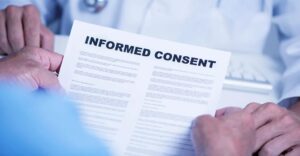Gabapentin
Overview
The most well-known use of Gabapentin is as an anticonvulsant, a drug used to treat epilepsy. When patients are administered Gabapentin, this may cause some uncertainty for them and their family without a prior seizure history. The US Food and Drug Administration has authorized Gabapentin for treating epilepsy and advanced herpes zoster (shingles) nerve pain. Utilizing a drug for the purposes for which it has been authorized is known as its labeled However, when treating bipolar illness, especially in cases of extreme mania, Gabapentin has a case of its off-label use. Gabapentin is also often used off-label to treat other disorders such as neuropathy, headaches from migraines, pain (neuropathy and neuralgia) resulting from diabetes problems and other sources, and fibromyalgia.
Information about Dosing
Typically, 300 mg of Gabapentin is used twice or three times a day to begin, and the dose is raised by 300 mg every 2-4 days, as recommended by a doctor. The typical daily maximum dose for bipolar disorder therapy is between 1,800 and 2,400 mg. Since the kidneys are largely responsible for eliminating Gabapentin, those with substantial renal impairment can need a lower dose.
Typical Side Effects
Gabapentin has extremely minimal side effects and is usually well tolerated. The typical adverse consequences include drowsiness, lightheadedness, decreased coordination, ataxia (difficulty walking), fatigue, trembling, double vision (diplopia), and jerky eye movements (nystagmus). There may be less daytime sedation by consuming more of the split dose just before bed. Typically, the adverse effects are transient and decrease as the drug’s tolerance grows.
Adverse Events and Safety Measures
Generally speaking, Gabapentin is a well-tolerated drug that is seldom stopped due to side effects. Among the most common adverse effects that might cause concern, particularly for elderly individuals, are sedation and dizziness. those using additional sedative drugs. Seniors may be more likely to fall due to vertigo’s effects or lightheadedness. Operating equipment or driving after sedation becomes risky for those who are sensitive to these side effects.
It could be required to gradually increase the dose or use lower levels in response to these negative effects.
Utilization during pregnancy and nursing: Category C
Pregnant women have not been the subject of any sufficiently controlled trials on Gabapentin to assess the drug’s danger to the fetus and the mother. In contrast to Tegretol, Depakote, and lithium, Gabapentin is less dangerous to use in gestation. It is not advised to be used when pregnant, particularly in the first trimester. If Gabapentin is necessary since quitting the drug might trigger a relapse and put patients at higher risk of the patient may continue taking Gabapentin after providing informed permission to the mother and unborn child from the doctor, or another drug or course of therapy.
Gabapentin should not be used by nursing women as it may be hazardous to infants and is excreted in breast milk when consumed by the infant. Breastfeeding should not begin if there is no other option to cease the medicine.
Potential Interactions with Drugs
Unlike many other mood stabilizers, Gabapentin is not much processed in the liver, therefore it exerts little impact on the liver’s enzymes. Gabapentin thus has extremely few clinically significant medication interactions. However, patients should be informed that if they combine Gabapentin with other drugs that have adverse effects on the central nervous system, including aggravating ataxia, weariness, drowsiness, and dizziness.
Alcohol should not be consumed by patients on Gabapentin since this combination may worsen sedation as well as fatigue. Additionally, alcohol’s sedative effects may have a depressive impact, masking the therapeutic Gabapentin side effects and treatment complications.
Overdosing
Acute Gabapentin overdose symptoms include sleepiness, blurred vision, ataxia, slurred speech, lethargy, and diarrhea as well as allergy. With supportive treatment, every patient in the documented acute overdose episodes made a full recovery.
Treating any suspected overdose as an emergency is imperative. The individual has to be brought to the emergency space for care and observation. The prescription drug container (as well as any other medication suspected in the overdose) need to be brought up as well, as the details on the medication label may useful in helping the treating physician figure out how many tablets the patient has taken.
Precaution Points to Remember
• If you forget to take a dosage, catch up by taking it two to three hours later than planned. If it’s near, Skip the missed dosage and resume your usual dosing regimen for the next scheduled dose. Never take double dosages.
Gabapentin should be taken with food or just after a meal to reduce upset stomach.
• Among the most common side effects that might cause concern, particularly for elderly people, are sedation and dizziness as well as those using additional sedative drugs. Seniors may be more vulnerable to falling as a result of vertigo or lightheadedness. Operating equipment or driving after sedation becomes risky. For those who are susceptible to these adverse effects, it could be essential to gradually increase the dose or use lesser quantities. • Keep the medicine out of direct sunlight and dampness, in the light-resistant container that came with it. Warmth and moisture may hasten the disintegration of your drug, causing it to lose its medicinal consequences.
• Make sure kids can’t get to your medicine.




